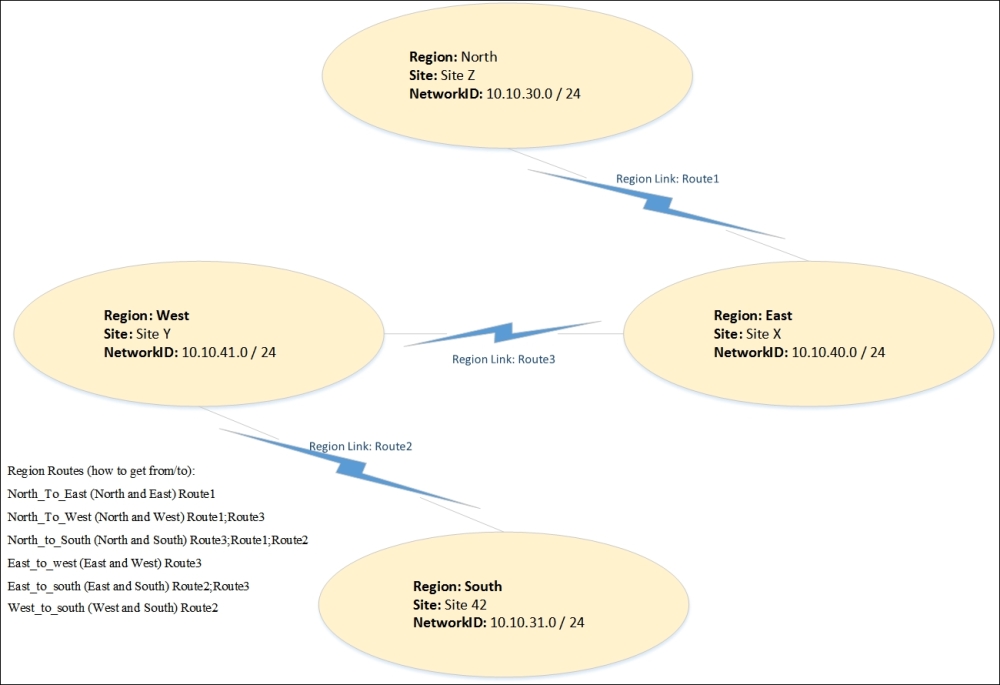Gathering all the pieces of the puzzle and planning the implementation is the most important part of QoS and CAC implementation. The implementation of QoS and CAC itself is not very difficult, but without proper planning, it could lead to an even poorer QoE for the end user. A poorly planned and implemented QoS scheme could, in other words, have a negative impact on the performance of the applications.
Never rush through this part; wait a week or two with the implementation rather than do it the wrong way.
Try to figure out the best way to document the network environment where the Lync traffic will be introduced. Decide whether to create Visio drawings, create a separate database, keep the records in an Excel spreadsheet or Notepad, or do all of the above or whatever works best. In this recipe, we'll give a few examples of simple tables to reflect the data we talk about, but there are other ways to do this as well. As part of this task, you should be acquainted with more information from the following online resources:
- The Lync Bandwidth Calculator post at http://www.microsoft.com/en-us/download/details.aspx?id=19011
- The Deploy Lync QOS post at http://www.microsoft.com/en-us/download/details.aspx?id=12633
- Download and get familiar with the Delivering Lync 2013 Real-Time Communications over Wi-Fi post at http://www.microsoft.com/en-us/download/details.aspx?id=36494
There are a lot of important questions to be answered before the planning can begin. Some of the important ones are as follows:
- How many sites are there?
- Which subnets are configured in each site?
- How much bandwidth is there at each location in total?
- How much available bandwidth is there at each location, or how much can be reserved for real-time traffic?
- What kind of traffic is there to and from the locations today?
- How much of this traffic can be restricted?
- How many users are there?
- What kind of users are there in each site (referred to as profiles in the Lync Bandwidth Calculator LBC)?
Use all of the preceding information and the bandwidth calculator to decide on the answers to the following five important questions:
- How many concurrent audio calls should be allowed at any given time?
- How many concurrent video calls should be allowed at any given time?
- What QoE or which audio codec will be allowed between sites?
- What QoE or which video codec will be allowed between sites?
- How many shared sessions should be planned for?
Based on all the information gathered, we could end up with a Visio that draws tables like the one shown as follows:

The naming of table headers is based on the actual PowerShell command parameters used to import data, if applicable.
The values for the Differentiated Services Code Point (DSCP) marking and port ranges are only examples, and are not to be implemented blindly. Do the calculations and avoid collisions based on the information provided in the white papers:
- Network Bandwidth policies
Identity
AudioBWLimit
AudioBWSessionLimit
VideoBWLimit
VideoBWSessionLimit
Description
Low
40
800 (20 Calls)
100
100 (Effectively 0 call)
For bad WAN links
Medium
60
2400 (40 Calls)
640
6400 (10 Calls)
Standard WAN links
High
80
8000 (100 Calls)
1500
75000 (50 Calls)
Best Quality
- Regions
Identity
CentralSite
AudioAlternatePath
VideoAlternatePath
Description
East
ROS
0
0
Test1
West
ROS
1
1
Test2
North
DAR
1
1
Test3
South
DAR
1
1
Test4
- Network Sites
Identity
NetworkRegionID
BWPolicyProfileID
Description
Site X
East
Medium
Remote X
Site Y
West
High
Remote Y
Site Z
North
Medium
Remote Z
Site 42
South
Low
VPN 42
- Network Subnets
Identity
MaskBits
Description
NetworkSiteID
10.10.30.0
24
SkyMode
Site Z
10.10.31.0
24
EarthMode
Site 42
10.10.40.0
24
FireMode
Site X
10.10.41.0
24
WaterMode
Site Y
- Region Links
Identity
NetworkRegionID1
NetworkRegionID2
BWPolicyProfileID
Route1
North
East
Medium
Route2
South
West
Medium
Route3
East
West
High
- Region Routes
Identity
NetworkRegionID1
NetworkRegionID2
NetworkRegionLinkIDs
North_To_East
North
East
Route1
North_To_West
North
West
Route1;Route3
North_to_South
North
South
Route3;Route1;Route2
East_to_west
East
West
Route3
East_to_south
East
South
Route2;Route3
West_to_south
West
South
Route2
- Table for QoS values
Type of traffic
DSCP Value
Audio
46 (EF)
Video
34 (AF41)
Signaling and app sharing
24 (CS3)
File transfer
18
- Table for port ranges
Type of service
Port start
Port count (Number of ports)
Range =
Audio
50000
2000
50000 - 51999
Video
52000
2000
52000 - 53999
App sharing
54000
2000
54000 - 55999
File transfer
56000
2000
56000 - 57999
Edge service
10000
